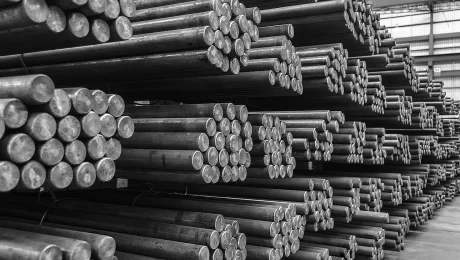Unlocking the Secrets of Processing Techniques: How They’re Used to Make Steel Round Bars Perfect
Have you ever wondered how those shiny steel round bars are made so precisely? Or what special steps are involved to turn raw metal into a useful product? If you’re curious about processing techniques, you’re in the right place. Today, we’ll explore the fascinating world of how steel round bars are created, starting from raw materials to the finished product. And trust us, once you understand this process, you’ll see steel in a whole new light.
What Are Processing Techniques?
Processing techniques are the step-by-step methods and tools used by engineers and manufacturers to change raw materials into finished products. In the case of steel round bars, these techniques help improve the strength, shape, and surface of the steel. From melting and shaping to cooling and finishing, each step is important to make sure the final product meets strict standards.
Why Are Processing Techniques Important for Steel Round Bars?
The quality of steel round bars depends a lot on the processing methods used. Proper techniques ensure the steel is strong, durable, and has a smooth surface. Without them, the bars could be weak or misshapen, which can cause problems in construction, manufacturing, and other industries. That’s why understanding these processes helps us value the craftsmanship behind each steel bar.
Step-by-Step: How Steel Round Bars Are Made
1. Melting and Casting
The first step is melting raw materials like iron ore, scrap steel, and other metals in a furnace. This process, called melting, transforms the raw materials into liquid steel. Once melted, the steel is poured into molds to make large ingots or billets. This is called casting, and it creates the basic block from which the bars will be shaped.
2. Heating and Forging
Next, the ingots or billets are heated again to make them easier to work with. They are then shaped using either forging (hammering with heavy tools) or rolling (passing through large rollers). This process aligns the metal’s internal structure and gives the steel a better shape for making round bars.
3. Hot Rolling
In hot rolling, the heated billets are passed through rollers that shape the steel into long, round bars. This method improves the surface finish and makes the bars closer to their final shape. Hot rolling also enhances the steel’s mechanical properties, like strength and ductility.
4. Cooling and Heat Treatment
After shaping, the steel bars are cooled down carefully. Sometimes they undergo heat treatments, such as quenching or tempering, to improve hardness and toughness. These treatments are vital because they give the steel its specific qualities needed for different applications.
5. Cutting, Finishing, and Inspection
The final steps involve cutting the bars to the desired length, polishing the surface, and inspecting for quality. Some bars go through processes like shot blasting or grinding to remove imperfections. Rigorous inspection ensures that each steel round bar matches the required specifications and safety standards.
Types of Processing Techniques Used in Steel Making
- Cold Working: Shaping the steel at room temperature to improve surface finish and dimensional accuracy.
- Heat Treatment: Controlled heating and cooling to enhance strength, hardness, and ductility.
- Rolling and Forging: Mechanical deformation techniques to give the steel its shape and internal structure.
- Surface Finishing: Processes like polishing, grinding, or coating to improve appearance and corrosion resistance.
- Inspection and Testing: Non-destructive tests to ensure the steel meets quality standards.
How Do Processing Techniques Influence Steel Quality?
The way steel is processed affects its strength, flexibility, and durability. For example, the correct heat treatment makes the steel harder or more flexible depending on its use. Proper rolling and forging improve internal structure and reduce weaknesses. And good surface finishing makes the steel resistant to rust and wear. All these techniques combined ensure the steel round bars are reliable and long-lasting.
Final Thoughts: Why Knowing Processing Techniques Matters
Understanding processing techniques gives you a new appreciation for steel round bars. These methods are the backbone of quality manufacturing, making sure the steel is safe and effective for everyday use. Whether in construction, automotive, or industrial machinery, the right processing makes all the difference.
Next time you see a steel round bar, think about the complex journey it took—from melting raw materials to the precisely finished product. It’s a marvel of engineering and craftsmanship happening behind the scenes.
Curious to learn more about how different processing techniques impact other metals or materials? Keep exploring, because each step in fabrication opens up a world of possibilities.
Secondary keywords: heat treatment, cold working, surface finishing, forging, rolling

